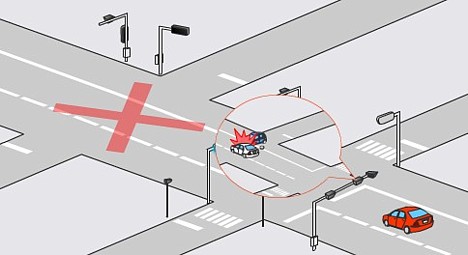
Japan's National Police Agency is moving forward with plans to introduce a road safety system that alerts drivers to potential hazards through audio and visual notifications on in-vehicle navigation systems. With testing scheduled to begin in Tokyo this year, the system is expected to be rolled out in 2008 after the test results are verified.
The system, developed by the Universal Traffic Management Society of Japan (UTMS), is known as the Driving Safety Support System (DSSS). The system relies on networks of two-way communication devices called infrared beacons installed at a height of 5.5 meters above roadways, particularly in accident-prone areas. These infrared beacons detect the presence of vehicles and pedestrians in hard-to-see locations and communicate this information to drivers through their in-vehicle navigation systems.
As many as 20 different subsystems, each designed to prevent a specific type of accident (rear-end collisions, head-on collisions, right-turn collisions, etc.), are being studied. Of these subsystems, 5 are expected to be rolled out in 2008 and are being tested in Tokyo -- including one that alerts drivers to the presence of pedestrians when turning left through intersections, one for highways that provides information about merging traffic, and one that provides information about traffic snarl-ups to prevent rear-end collisions.
DSSS is similar to the Vehicle Information and Communication System (VICS), an existing system that also relies on infrared beacons to communicate traffic information to in-vehicle navigation systems, but only about 10% of all vehicles in Tokyo make use of this system. Future studies will focus on developing ways to popularize this type of system.
The tests in Tokyo are designed to provide a detailed investigation of the effectiveness and impact on the safety of ordinary drivers. When experimental testing of the 5 systems was carried out in Toyota City in Aichi prefecture from 2002 to 2004, more than 80% of users thought they were effective.
[Source: Corism]

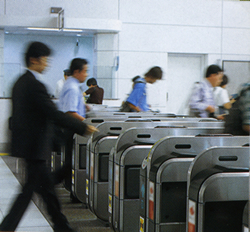 The East Japan Railway Company (
The East Japan Railway Company ( Every August,
Every August, 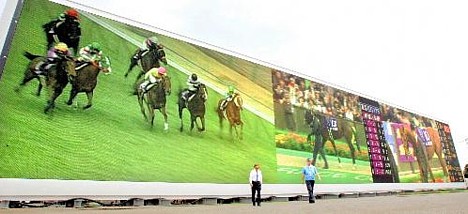
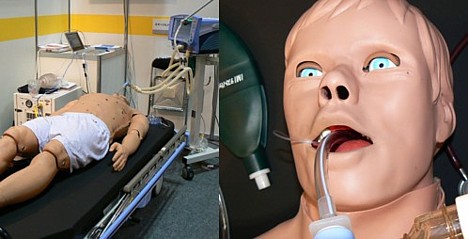
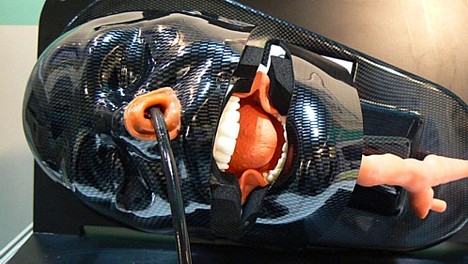

 With the arrival of Japan's rainy season, a mysterious type of green, glow-in-the-dark mushroom begins to sprout in Wakayama prefecture. The Mycena lux-coeli mushrooms, known locally as shii no tomobishi-dake (literally, "chinquapin glow mushrooms"), sprout from fallen chinquapin trees. As they grow, a chemical reaction involving luciferin (a light-emitting pigment contained within the mushrooms) occurs, causing them to glow a ghostly green.
With the arrival of Japan's rainy season, a mysterious type of green, glow-in-the-dark mushroom begins to sprout in Wakayama prefecture. The Mycena lux-coeli mushrooms, known locally as shii no tomobishi-dake (literally, "chinquapin glow mushrooms"), sprout from fallen chinquapin trees. As they grow, a chemical reaction involving luciferin (a light-emitting pigment contained within the mushrooms) occurs, causing them to glow a ghostly green. Chatty, a talking mannequin with a human face, is on display at the
Chatty, a talking mannequin with a human face, is on display at the  As the number of willing blood donors in Japan continues to decline, the
As the number of willing blood donors in Japan continues to decline, the